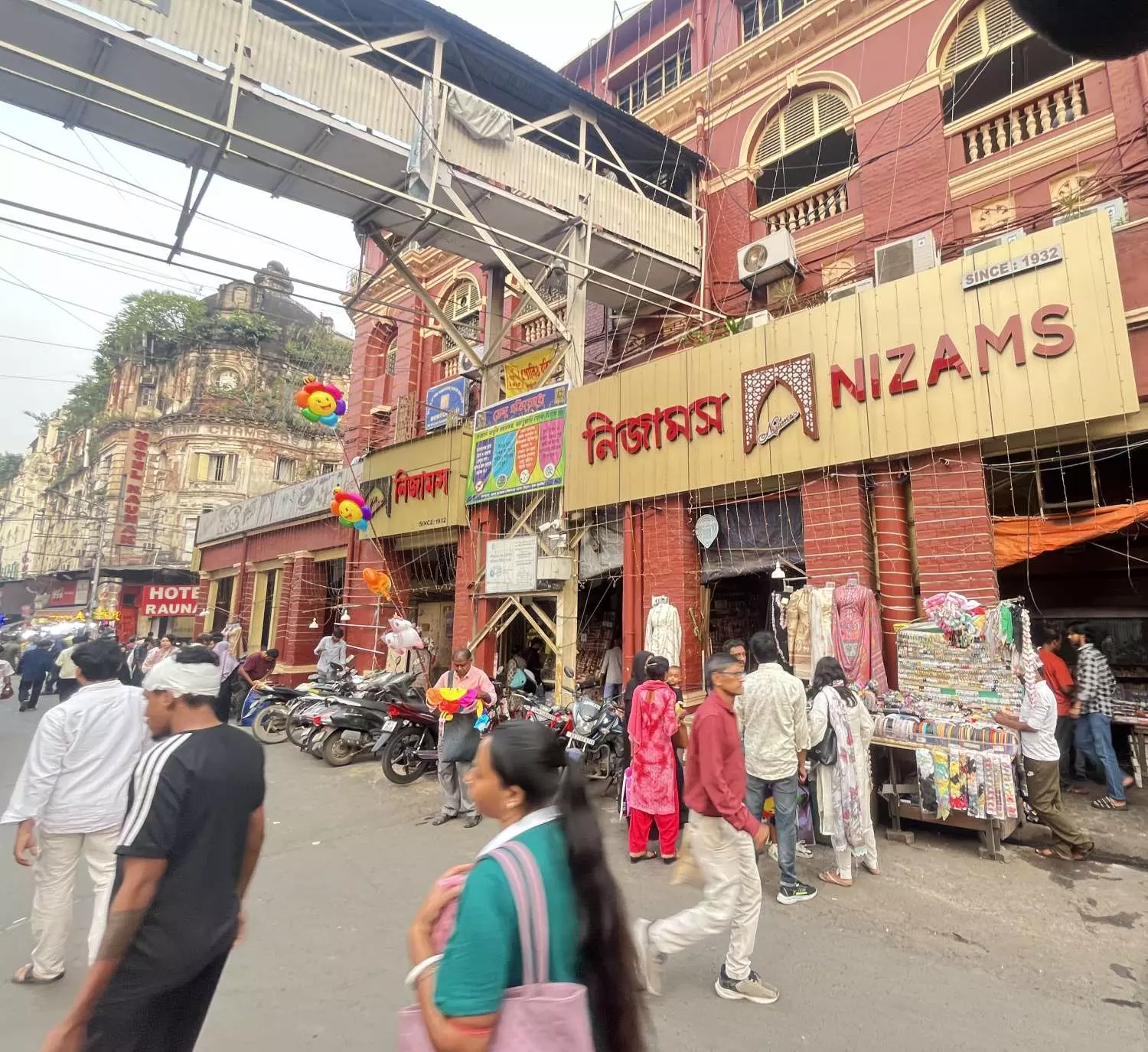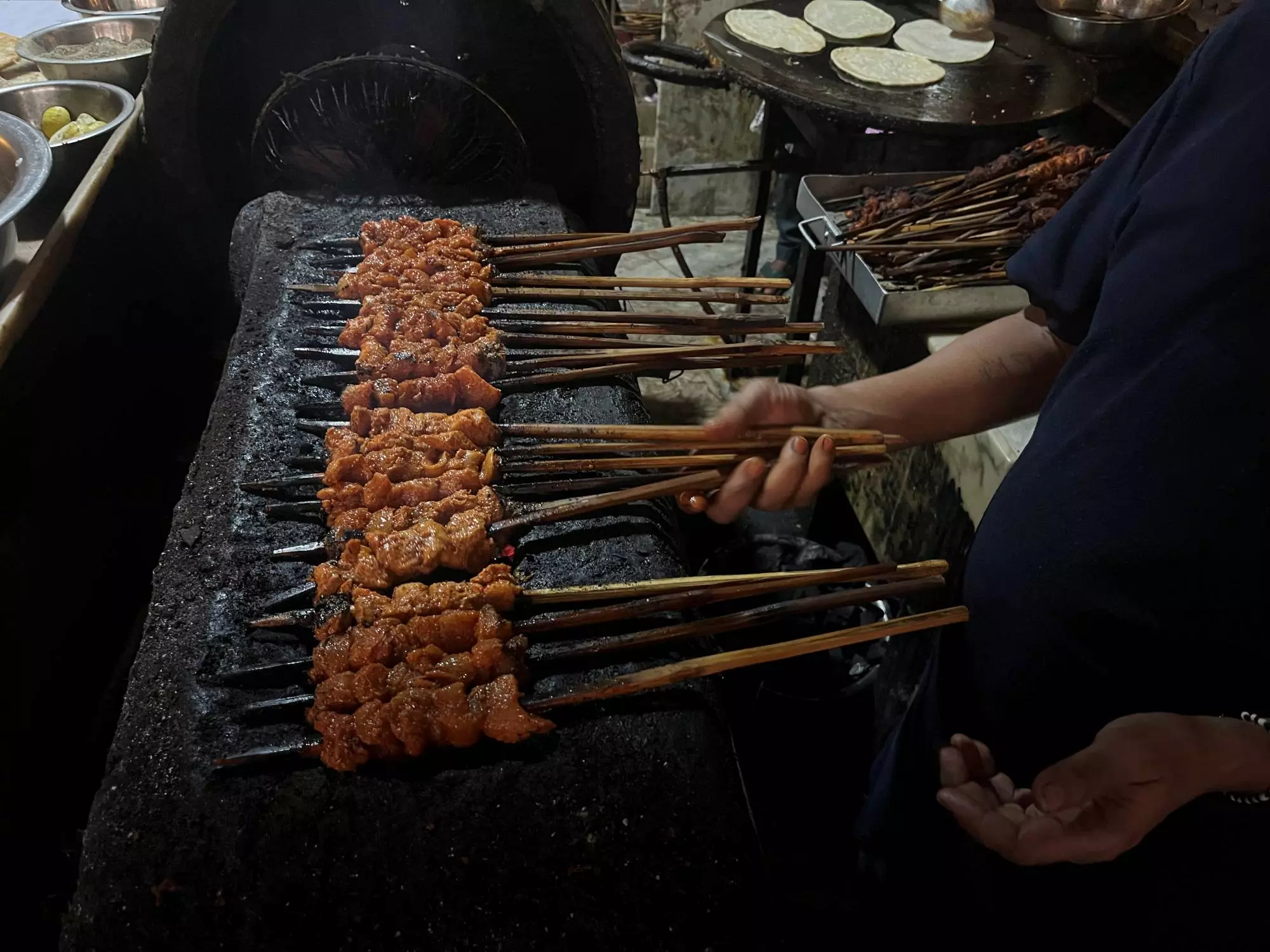
- Home
- India
- World
- Premium
- THE FEDERAL SPECIAL
- Analysis
- States
- Perspective
- Videos
- Sports
- Education
- Entertainment
- Elections
- Features
- Health
- Business
- Series
- In memoriam: Sheikh Mujibur Rahman
- Bishnoi's Men
- NEET TANGLE
- Economy Series
- Earth Day
- Kashmir’s Frozen Turbulence
- India@75
- The legend of Ramjanmabhoomi
- Liberalisation@30
- How to tame a dragon
- Celebrating biodiversity
- Farm Matters
- 50 days of solitude
- Bringing Migrants Home
- Budget 2020
- Jharkhand Votes
- The Federal Investigates
- The Federal Impact
- Vanishing Sand
- Gandhi @ 150
- Andhra Today
- Field report
- Operation Gulmarg
- Pandemic @1 Mn in India
- The Federal Year-End
- The Zero Year
- Science
- Brand studio
- Newsletter
- Elections 2024
- Events
Globally recognised, why Kolkata’s kathi rolls continue to rule over the city’s heart
The iconic street food, said to have been first rolled in the kitchens of the city's Nizam's Restaurant in the early 1930s for the British officers, is the go-to option for office goers and students looking for a pocket-friendly bite, or couples and families needing a quick-fix meal

An afternoon walk through upscale Park Street, busy College Street, the lanes near New Market or the Gariahat market, or any bustling bylane in Kolkata reveals a similar scene — long queues stretching outside street food stalls. Often, the smoky aroma of grilled kebabs hangs in the air; listen carefully, and one can detect the sharp hiss of hot tavas and the soft thud of parathas being...
An afternoon walk through upscale Park Street, busy College Street, the lanes near New Market or the Gariahat market, or any bustling bylane in Kolkata reveals a similar scene — long queues stretching outside street food stalls.
Often, the smoky aroma of grilled kebabs hangs in the air; listen carefully, and one can detect the sharp hiss of hot tavas and the soft thud of parathas being flipped and folded among the medley of city sounds — cars honking or driving by, the chatter of many voices, the hum of air conditioners from nearby buildings…
The West Bengal capital is often credited for its delectable street food spread; mouthwatering phuchkas (gol gappas), quick-fix noodles, pocket-friendly biriyani being served from gigantic handis, momos, the menu runs on. But the above scene is a testament to the city’s overwhelming and enduring love for its hot, crisp-fried wrap, which has now gained worldwide recognition nearly a century after it is said to have been first rolled up to suit the convenience of customers looking for a filling and delicious meal on the go. Kolkata’s ‘kathi roll’ has been ranked sixth in the world’s best wraps by TasteAtlas, a culinary guide for traditional dishes.
What began in the Mughlai kitchens of Nizam’s has now spread out to the city’s alleys, college zones, office paras (business hubs), and beyond to become synonymous with Kolkata’s vibrant street food culture.
“When I’m running late, I just drop by any roll-er dokan [shop selling rolls] near my office. Two minutes later, I have got a hot egg chicken roll, with onions, chillies and a squeeze of lime added for flavour. That’s breakfast and lunch rolled-into-one for me [pun intended!].”
Also read: 20 years of the RTI law: How a marquee legislation has been weakened and diluted
Like much of Kolkata’s ‘Mughlai’ cuisine, the origin story of the kathi roll is linked to the culinary legacy that took root in the city with the exile of Nawab Wajid Ali Shah to Calcutta’s (now Kolkata) Metiabruz in 1856, after the British East India Company annexed his kingdom of Awadh, claims Faiyaz Ahmed, general manager of Nizam's Restaurant, widely regarded as the cradle of this delicacy.
“With the Nawab came thousand others — relatives, cooks, aides, and more — who gradually settled across different parts of the city. Among their descendants was Raza Hassan, who went on to establish Nizam’s restaurant to serve Mughlai food near Sir Stuart Hogg Market, now known as New Market,” Ahmed added.

Nizam's, believed to be the first to make the Kolkata kathi rolls. Photo by Jayanta Shaw
Initially, it was a small stall set up, just outside the market, before moving to its current location within the sprawling market complex in 1932.
“Since the kathi roll was created to meet the needs of British soldiers and police at the original stall, we can trace its origins back to around 1930, at least two years before the eatery moved to its current location,” said Ahmed.
Culinary experts affirm the strong influence of both Awadh and the Raj in shaping this iconic wrap.
“British public servants, especially those in uniform such as military personnel and policemen, were accustomed to having sandwiches as a quick meal on the go. In Kolkata [then Calcutta], they developed a taste for succulent kebabs. During lunchtime, they began requesting that the kebabs be rolled in rotis for easier eating on the move,” food writer and director of culinary arts at Kolkata’s International Institute of Hotel Management (IIHM), Sanjay Kak, told The Federal.
“However, rolling the kebabs in plain roti or naan made them dry, which led to the innovative idea of wrapping them in crispy lacha parathas, along with dollops of onions and a squeeze of lemon juice to keep the roll moist,” he further explained.
Kolkata rolls continue to use flaky lacha paratha with some oil and not the softer tawa roti or rumali wrap often used elsewhere (Delhi residents think Khan Chacha’s iconic rumali rolls).
In those early days, minced beef or mutton was shaped into balls and skewered on iron rods to make the kebabs, which came to be popularly known as seekh kebabs, said Ahmed. The word “seekh” meaning skewer.
Gradually, to impart a smoky flavour to the kebabs, the iron skewers at Nizam’s were replaced with bamboo sticks, called kathi in Bengali, and thus the term kathi roll was coined, he added.
Also read: How Raghunath Sasmal made Dahibara Aludum a part of Odisha’s culinary legacy
Though the name stuck, today most stalls, except of course Nizam’s, and a few others like the popular Kusum Rolls and Hot Kati Roll on Park Street, have abandoned the bamboo skewers. Instead, ‘kathi roll’ now broadly refers to a paratha-wrapped stuffed roll.

Meat being cooked on bamboo skewers for kathi rolls at Nizam's. Photo by Jayanta Shaw
“We have replaced seekh kebabs as the filling with pan-fried boti kebabs,” said Rafique (identified by first name only) of Roll Corner, a shop in the city’s Behala area.
This flexibility to adapt to changing requirements is one of the many traits that have made it such a convenient food for city life, Kak pointed out, adding that it can be customised to suit both palate and purpose.
Students seeking an affordable yet filling breakfast before morning classes, office-goers grabbing a quick lunch, those looking for a snack post work, before rushing home on a busy metro or bus, families looking for a quick-fix meal when the cook takes a day off or midnight party revellers leaving a star address after a party, nearly everyone in the city has a roll memory.
For Swastik Bhattachariya, a young doctor with KPC Medical College and Hospital, Jadavpur, it is “comfort food” after gruelling hours of treating patients. “After a late-night duty, I always stop by the roll guy near the hospital. Even at that hour, you find the stove is lit, parathas being rolled, as comforting a sight to the eyes in the dark as the roll is for my hunger pangs.”
Jadavpur University student Arindul (identified by first name only) is proud that his “favourite snack” has received global recognition. “It’s convenient to eat between classes,” he says by way of explaining why he is partial to the roll. “I just pick one up, walk to the hostel, and eat it on the go. The combination of crispy paratha, soft egg, and juicy chicken is unbeatable,” he added.
Kolkata rolls often have egg as an add-on option to the chicken or mutton filling. Of course, there are simple egg rolls too, quite a city favourite, where the egg is the protagonist of the dish. Whatever the pick, standalone or add-on, the egg is integrated into the paratha rather than stuffed separately — dropped on the paratha as it cooks, and fried with it.
“It’s comfort food that fills the stomach and offers value for money,” summed up Manideepa Saha, a homemaker, taking a hearty bite of the egg chicken roll she had picked up Kusum Rolls while strolling back home after a shopping spree to Park Street.
While prices vary greatly, depending on the eatery and the choice of filling, typically a roll from one of the better and more popular places can be picked up for as little as Rs 50-80. Vegetarian options can be had for less.
To give a sense of the item’s popularity, Nizam’s sees over one lakh visitors every day, with around 45 per cent of them choosing its signature item, the Kathi Roll, said Ahmed.
Also read: How ragi and jowar rotis, a village staple, became urban superfood in Telugu states
Kak attributed the delicacy’s popularity largely to its convenience and versatility — easy to prepare and even easier to eat on the go, making it a favourite for both busy customers and street food vendors.
Wrapped in a soft, crispy paratha and packed with flavourful fillings, it requires no cutlery or elaborate setup, which makes it perfect for quick meals or snacks. For sellers, it’s a hassle-free option that doesn't need much equipment or preparation time, allowing for quick service and high customer turnover.
“Another major reason for its popularity is how highly customisable it is. The roll can be tailored to suit a wide variety of tastes and dietary preferences, ranging from spicy chicken and mutton to simple egg rolls, or even paneer, potato, and mixed vegetable options for vegetarians,” explained Kak.
“Nutritionally, it offers proteins from the fillings, carbohydrates from the wrap, and fiber and vitamins from added salads like onions and cucumbers. Since it is usually shallow-fried, it avoids excessive oil, making it a healthier street food alternative. Most importantly, it's packed with flavor, combining spices, textures, and aromas into a single, delicious bite that keeps people coming back for more,” Kak, who himself is also a renowned chef, added.
Most roll vendors merge practicality with craft. “We keep parathas semi‑cooked in batches, kebab skewers ready,” said Rafique who has run his stall for fifteen years. “Speed and consistency matter; if your roll is soggy, people move on.”
Added Ahmed: “It strikes a careful balance; not soggy, not drenched in sauce, firm enough to hold their shape in your hand. That’s why you won’t find chutney inside.”
As the crowds continue to gather and rolls are handed out by the dozen, one can’t help but wonder if mass is the antonym of class, with roll shops mushrooming in every nook and corner, how long can the Kolkata kathi roll hold on to its legendary status?
